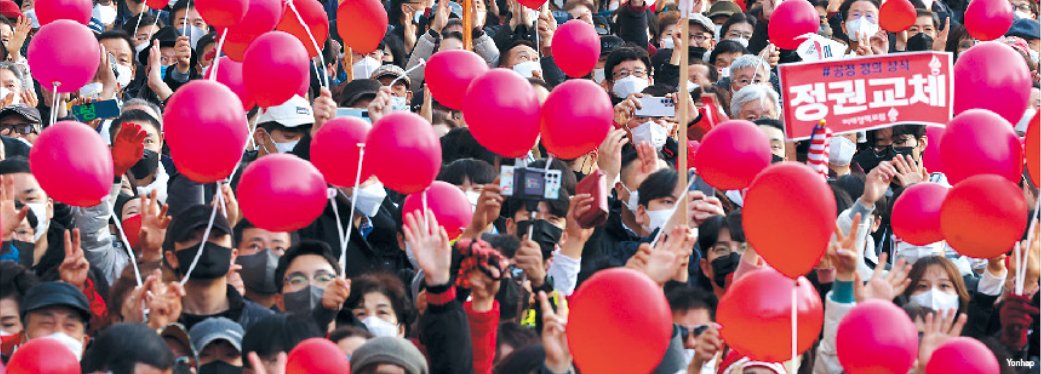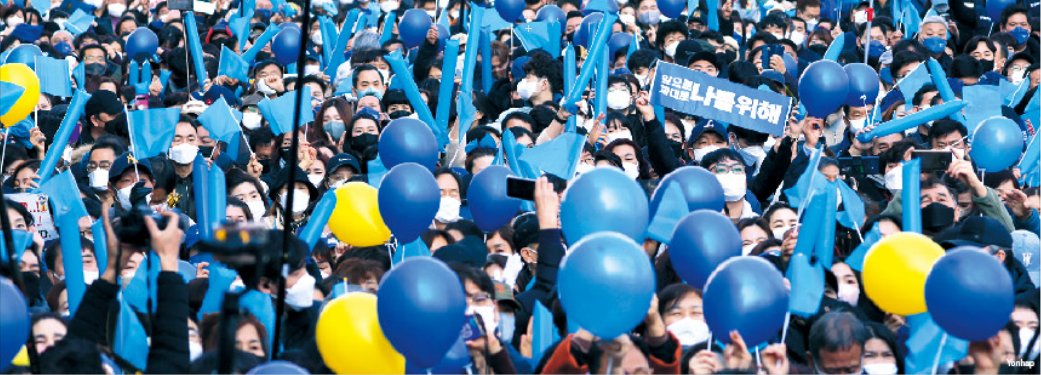The ideological divide between liberalism and conservatism is apparent in South Korea just as it is in most democratic countries, but here it is slightly different from what is visible in other places.
It does not fit the textbook definition, and that is largely because South Korea’s unique geographical and historical background play a role in shaping unique political ideologies.
Through research article excerpts and expert opinions, we delve into what constitutes being conservative or liberal in South Korea and how this ideological divide has shifted and transformed over the years.
Q. What defines being conservative or liberal in South Korea?A. Since South Korea took shape in 1948 and until recent years, one of the main differences between conservatives and liberals has been their priorities in approaching North Korea.
From the 1950-53 Korean War that ended in a cease-fire, and going through industrialization and growth during the Cold War era, South Koreans have developed two vastly different ideas on what the country should do with its closest but most hostile neighbor up north.
Many of the middle-age and elderly populations in South Korea received anti-communist education in school and lived under the constant military threat from North Korea. While they have seen and learned the same, how they respond to these risk factors has been a crucial factor in deciding who’s liberal or conservative.
Conservatives in this country have largely focused on strengthening ties with the United States and emphasized the need to coerce North Korea into giving up its military power by reaching economic deals in exchange.
Maintaining a hard-line stance and heavier military spending has accordingly been emphasized, and they believe the US is a country to be trusted in working toward unification, as it fought on the same side as South Korea in the war and shed blood together on the front lines for three years.
Liberals, on the other hand, have believed in the potential of a spillover effect in approaching North Korea, meaning they expect to make steps toward unification by providing aid to encourage cooperation across the peninsula. Some liberals have opposed a continued US military presence in South Korea, calling them a blockade to real peacemaking efforts between two Koreas.
The so-called “sunshine policy” under the Kim Dae-jung administration is an example of the liberal approach toward peace with North Korea. The idea of providing enemies with gifts to prevent them from causing harm was seen as a way to open talks for economic, cultural and political cooperation.
Some extreme activists on the liberal side were labeled as communists in the past for staging pro-North Korea activities, but their support base crumbled in recent years -- most notably the fall of the Unified Progressive Party -- which helped to erase part of the “communist” label off the liberal faction.
Such differences in which side to take and philosophies to endorse with regard to North Korea has been one of the main deciding factors in defining one’s political affiliation, and more broadly -- helped cement the two major political parties’ solid support bases.
Q. What else should we consider in understanding the ideological divide?A. In addition to North Korea, another major branch in the conservative-liberal split is how each side views activist movements during military dictatorships.
Much of the progress toward democracy in South Korea has been led by fierce protests and rallies held by young activists from 1961 to 1988 during Park Chung-hee and Chun Doo-hwan administrations, and those who actively participated in anti-dictatorship protests constitute a large portion of the liberal bloc’s supporters.
Most of these supporters are voters in their 40s and 50s, and as seen in the latest presidential election, these voters continued to express support for the main liberal party, the Democratic Party of Korea.
It’s not that conservatives are against these movements, but there is a clear age bracket that emerges among key supporters of the conservative faction, now led by the People Power Party.
Many of the firm supporters of the conservative party are those in their 60s and above, most of whom experienced poverty as South Korea when it was one of the poorest countries in the world after the Korean War ended in 1953.
These people prioritize economic growth and prosperity above other issues, showing support to the conservative faction, especially crediting the Park Chung-hee administration for the explosive economic growth and raising the country out of poverty.
Conservatives have emphasized how friendly they are to corporations while liberals prioritized workers and their rights. However, almost all past administrations -- liberal and conservative -- have eventually turned corporate-friendly for the sake of job creation and economic growth.
Q. What additional changes can we expect moving forward?A. But in recent years, the game of politics has become more complicated in South Korea, especially as we see a growing number of new voters now in their 20s and 30s. They have stayed away from ideological allegiances and have priorities other than national security and democratization in mind.
Experts say their entrance to politics has helped South Korea see a shift in the ideological divide in a way reminiscent to that of the United States. Many of these new voters are well educated and have their own beliefs as to what constitutes good politics.
Nowadays, conservatives and liberals are forced to answer questions on what kind of strategies they have in mind in approaching more detailed issues like the gender conflict, housing crisis, labor market and the extent of government involvement.
The People Power Party is becoming more like the Republican Party of the US, while the Democratic Party is starting to resemble the party with the same name in the US, experts say.
By Ko Jun-tae (
ko.juntae@heraldcorp.com)
----The Korea Herald interviewed Eom Gyeong-yeong, director of local political think tank Zeitgeist Institute, and political commentator Rhee Jong-hoon.
The story also used a report from Kim Gi-dong, a political science professor at the University of Missouri, in 2021, a research report from Park Hyun-shin, an administrative studies professor at Dongduk Women’s University, published last year and a 2017 report from Hwang Ji-hwan, an international relations professor at the University of Seoul.








![[Today’s K-pop] Blackpink’s Jennie, Lisa invited to Coachella as solo acts](http://res.heraldm.com/phpwas/restmb_idxmake.php?idx=644&simg=/content/image/2024/11/21/20241121050099_0.jpg)